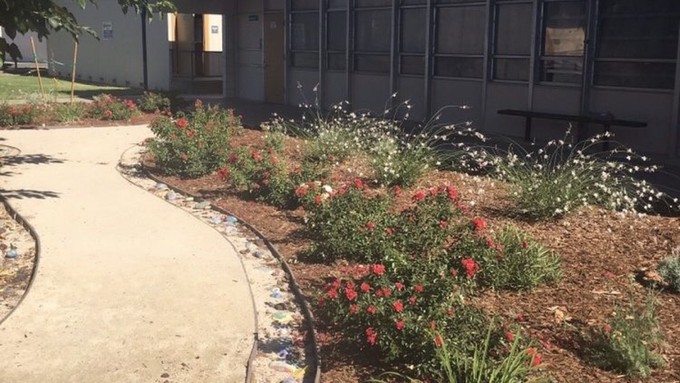
Saul Wiseman Grants emphasize education and diversity

The Natomas Garden & Arts Club and Garden Valley Elementary School used a 2019 Saul Wiseman Grant to create a butterfly garden at the Sacramento school. Courtesy Sacramento Perennial Plant Club
The Sacramento Perennial Plant Cub is now accepting applications for its annual Saul Wiseman Grants, a unique program in honor of the club’s past president.
Application deadline is Jan. 16, 2023. Find the forms, past winners and full details at https://sacplants.org/grants.
Funds will be awarded in February – just in time for spring planting and gardening activities, say the club members.
“The purpose of the Saul Wiseman Grants is to promote gardening and horticultural activities with an emphasis on education, service, or enhancement to our diverse community,” explains Lili Ann Metzer of the Perennial Plant Club. “Non-profit groups, community groups and schools within the County of Sacramento are encouraged to apply.”
SPPC grant recipients in 2022 are not eligible for 2023 grant awards, she notes. “Priority will be given to grant applications that support diversity, equity and inclusion.”
Projects must have a source of water for irrigation. Applicants may request up to $1,000. Smaller projects are encouraged; partial grants may be awarded.
And grant winners have to follow through. “Recipients will take before and after pictures and provide information about the results of the grants to the SPPC,” Metzer says.
Due to Covid, no grants were given in 2021, but 2022 brought out a full field of grant candidates. The 2022 grant recipients were:
Black Lives Matter Sacramento Community Home and Land Project
Bret Harte Elementary School Garden
Earl Warren School Garden Restoration and Improvement
Growing Healthy Kids at Floyd Farms
La Vista Center Horticulture Club
Root Cellar Community Garden
Questions? Email the club’s grants contact Anita Clevenger at anitac5159@gmail.com.
Details: www.sacplants.org.
--- Debbie Arrington
Comments
0 comments have been posted.Sacramento Digs Gardening to your inbox.
Food in My Back Yard Series
May 6: Maintain soil moisture with mulch for garden success
April 29: What's (already) wrong with my tomato plants?
April 22: Should you stock up on fertilizer? (Yes!)
April 15: Grow culinary herbs in containers
April 8: When to plant summer vegetables
April 1: Don't be fooled by these garden myths
March 25: Fertilizer tips: How to 'feed' your vegetables for healthy growth
March 18: Time to give vegetable seedlings some more space
March 11: Ways to win the fight against weeds
March 4: Potatoes from the garden
Feb. 25: Plant a fruit tree now -- for later
Feb. 18: How to squeeze more food into less space
Feb. 11: When to plant? Consider staggering your transplants
Feb. 4: Starting in seed starting
Sites We Like
Garden Checklist for week of May 11
Make the most of the lower temperatures early in the week. We’ll be back in the 80s by Thursday.
* Plant, plant, plant! It’s prime planting season in the Sacramento area. Time to set out those tomato transplants along with peppers and eggplants. Pinch off any flowers on new transplants to make them concentrate on establishing roots instead of setting premature fruit.
* Direct-seed melons, cucumbers, summer squash, corn, radishes, pumpkins and annual herbs such as basil.
* Harvest cabbage, lettuce, peas and green onions.
* In the flower garden, direct-seed sunflowers, cosmos, salvia, zinnias, marigolds, celosia and asters. (You also can transplant seedlings for many of the same flowers.)
* Plant dahlia tubers.
* Transplant petunias, marigolds and perennial flowers such as astilbe, columbine, coneflowers, coreopsis, dahlias, rudbeckia and verbena.
* Keep an eye out for slugs, snails, earwigs and aphids that want to dine on tender new growth.
* Feed summer bloomers with a balanced fertilizer.
* For continued bloom, cut off spent flowers on roses as well as other flowering plants.
* Add mulch to the garden to maintain moisture. Mulch also cuts down on weeds. But don’t let it mound around the stems or trunks of trees or shrubs. Leave about a 6-inch-to-1-foot circle to avoid crown rot or other problems.
* Remember to weed! Pull those nasties before they set seed.
* Water early in the day and keep seedlings evenly moist.